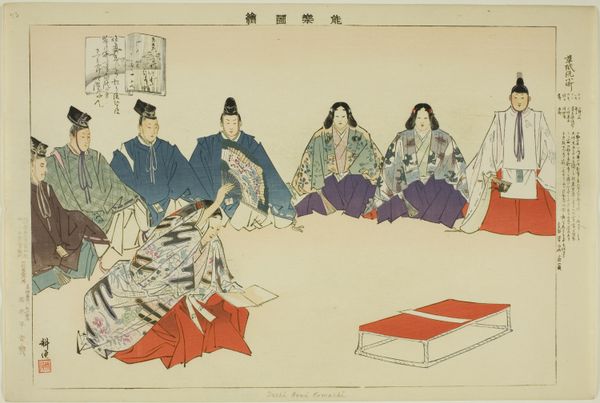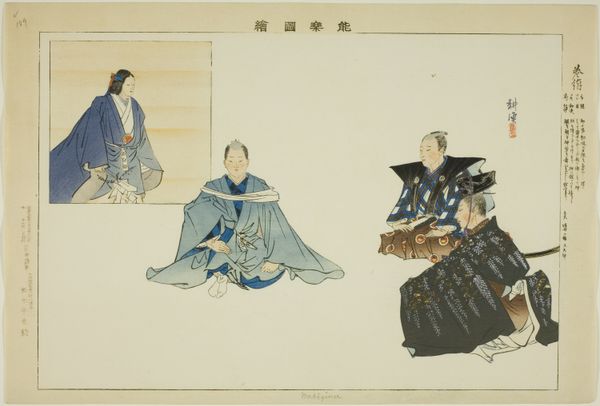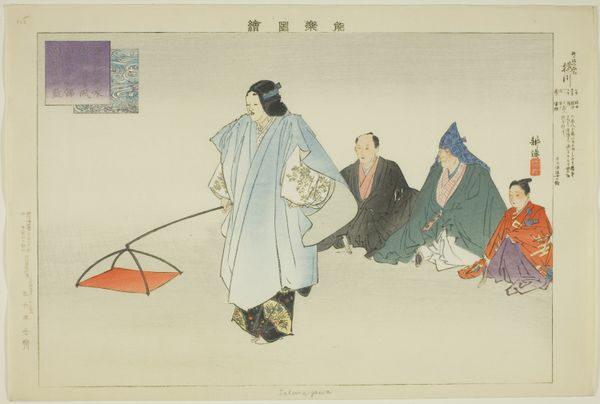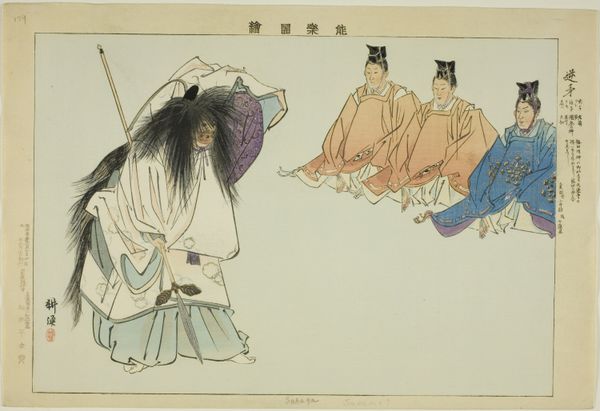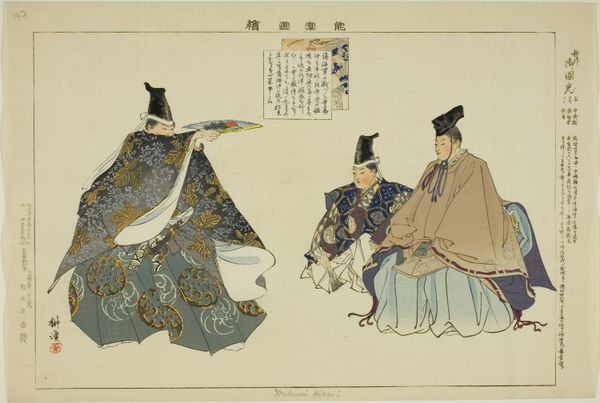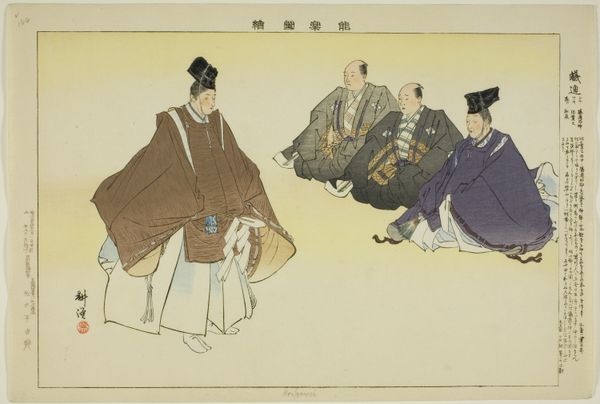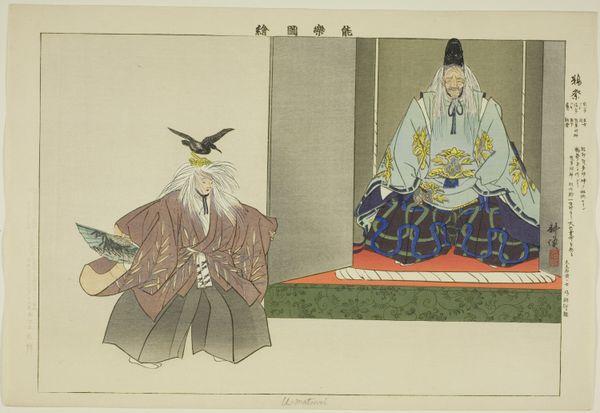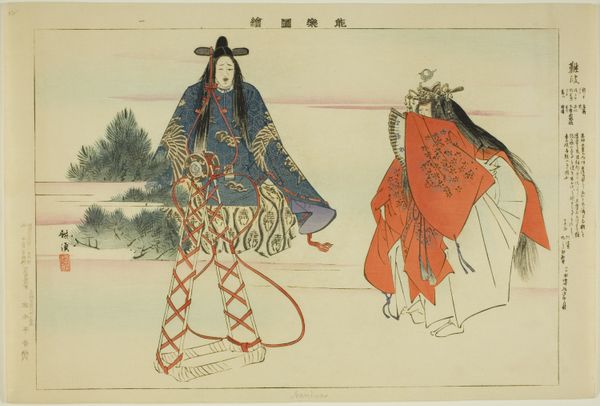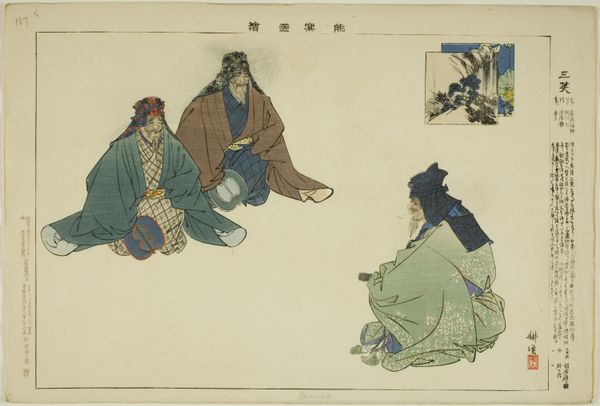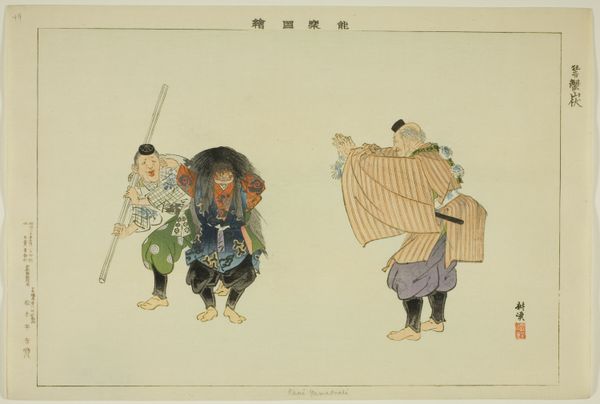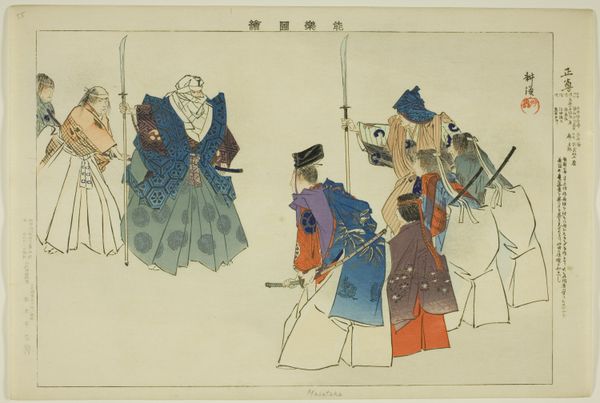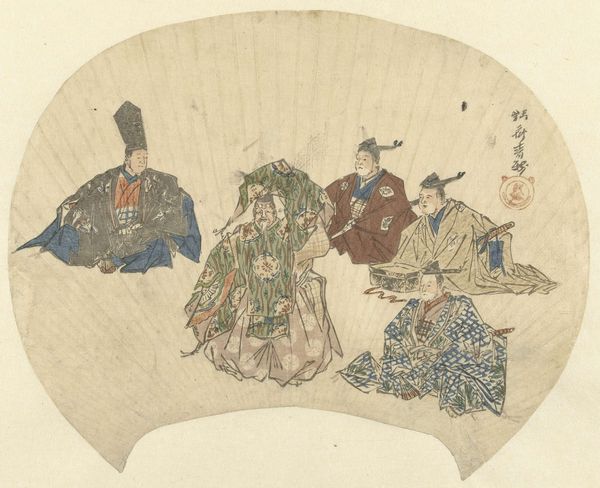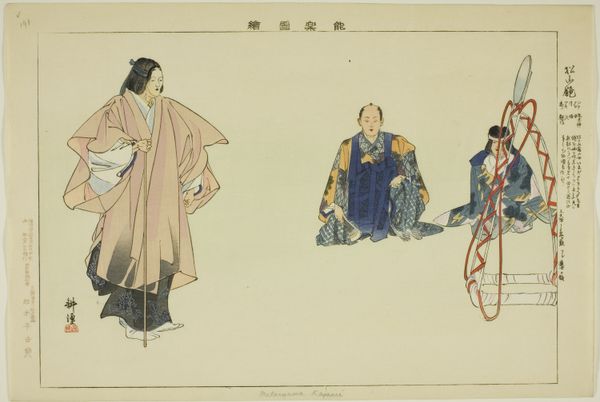
Shunkan, from the series "Pictures of No Performances (Nogaku Zue)" 1898
0:00
0:00
Dimensions: Approx. 25.2 × 37.4 cm (10 × 14 4/3 in.)
Copyright: Public Domain
Curator: Standing before us is Tsukioka Kôgyo's 1898 woodblock print, "Shunkan, from the series 'Pictures of No Performances (Nogaku Zue)'", housed right here at the Art Institute of Chicago. Editor: It strikes me as strangely serene despite the evident drama. The muted colours, the almost unsettling blank space...it's both captivating and mournful. Curator: It's interesting you say that. Kôgyo's works often tread that fine line. He captures a particular moment from a No play, immortalizing it in these vibrant, though deliberately understated, prints. Editor: I am fascinated by how each figure inhabits a separate space and displays different emotional response to their surrounding, which echoes the complex social dynamics within the traditional Japanese context it’s portraying, what do you think? Curator: Precisely. This image encapsulates a powerful scene – the exile of Shunkan, a Buddhist priest involved in a plot against the Heike clan. It captures the very moment of departure, of irreversible fate. You can almost feel the weight of his despair. Editor: And that vacant space amplifies that, doesn't it? It's a void representing not just physical isolation but the tearing away from society, from belonging. Kôgyo's skill lies in visualizing that intangible loss. Curator: Ukiyo-e, with its floating world aesthetic, has been brilliantly revived here. Editor: Absolutely, the composition is a fascinating interpretation of historical painting but I do appreciate how it addresses timeless themes of power, loyalty, and betrayal. It prompts us to consider the roles individuals play within societal structures. Curator: Indeed, Shunkan becomes a symbol of resilience, facing adversity. Kôgyo invites us not just to witness a historical event, but to reflect upon it, empathize with it, perhaps even see ourselves in it. Editor: These old stories are worth digging up. By reexamining historical moments through a contemporary lens, we can glean valuable insights into human experiences with themes like oppression, resistance, and, like you said, resilience. Curator: Kôgyo gives voice, or image rather, to unspoken histories, inviting conversations beyond the artwork itself. Editor: That is precisely what this artwork does. The exploration it facilitates invites viewers to question established norms, advocate for social change, and embrace diversity in artistic and cultural expressions. It’s a true statement.
Comments
No comments
Be the first to comment and join the conversation on the ultimate creative platform.
